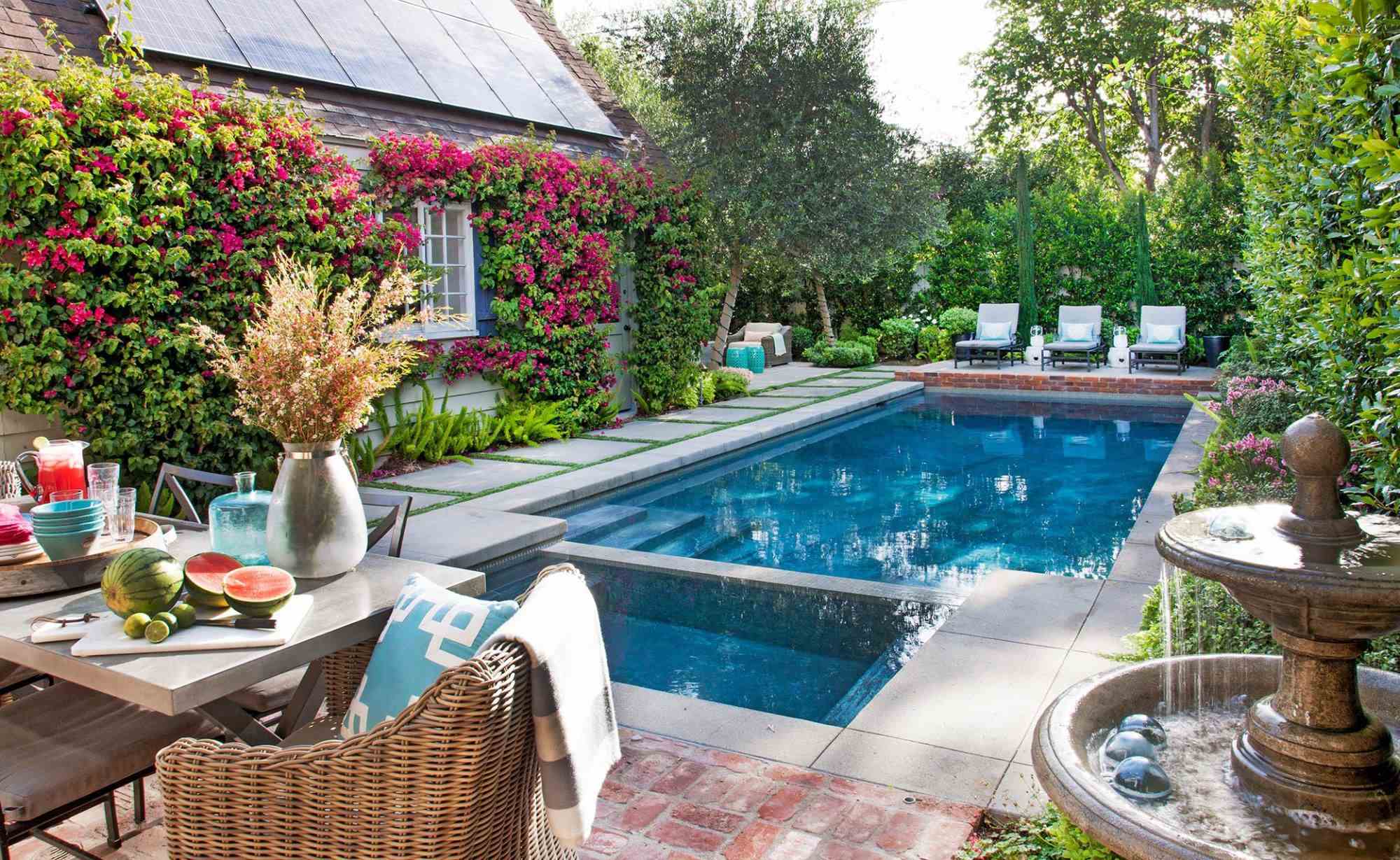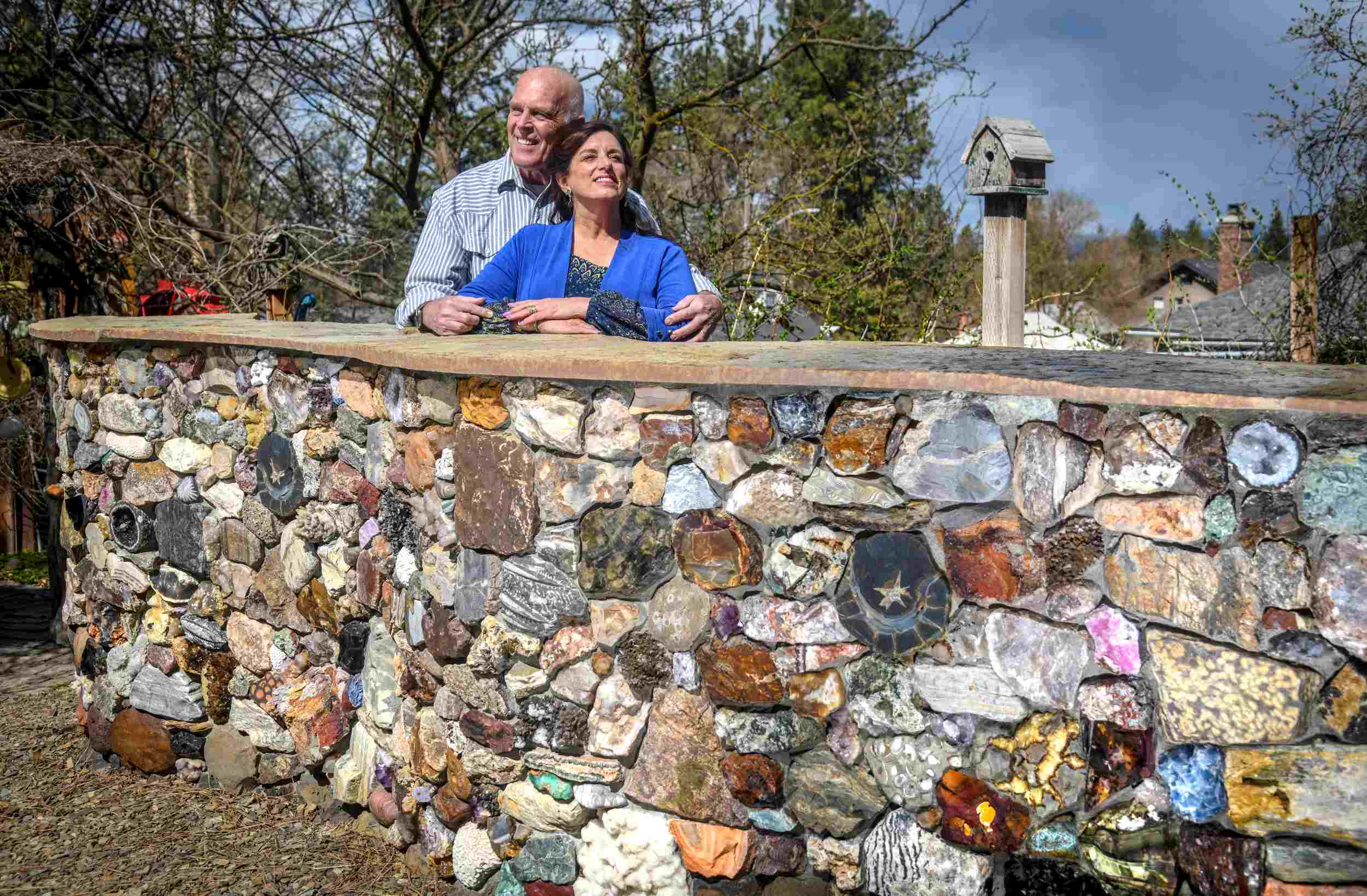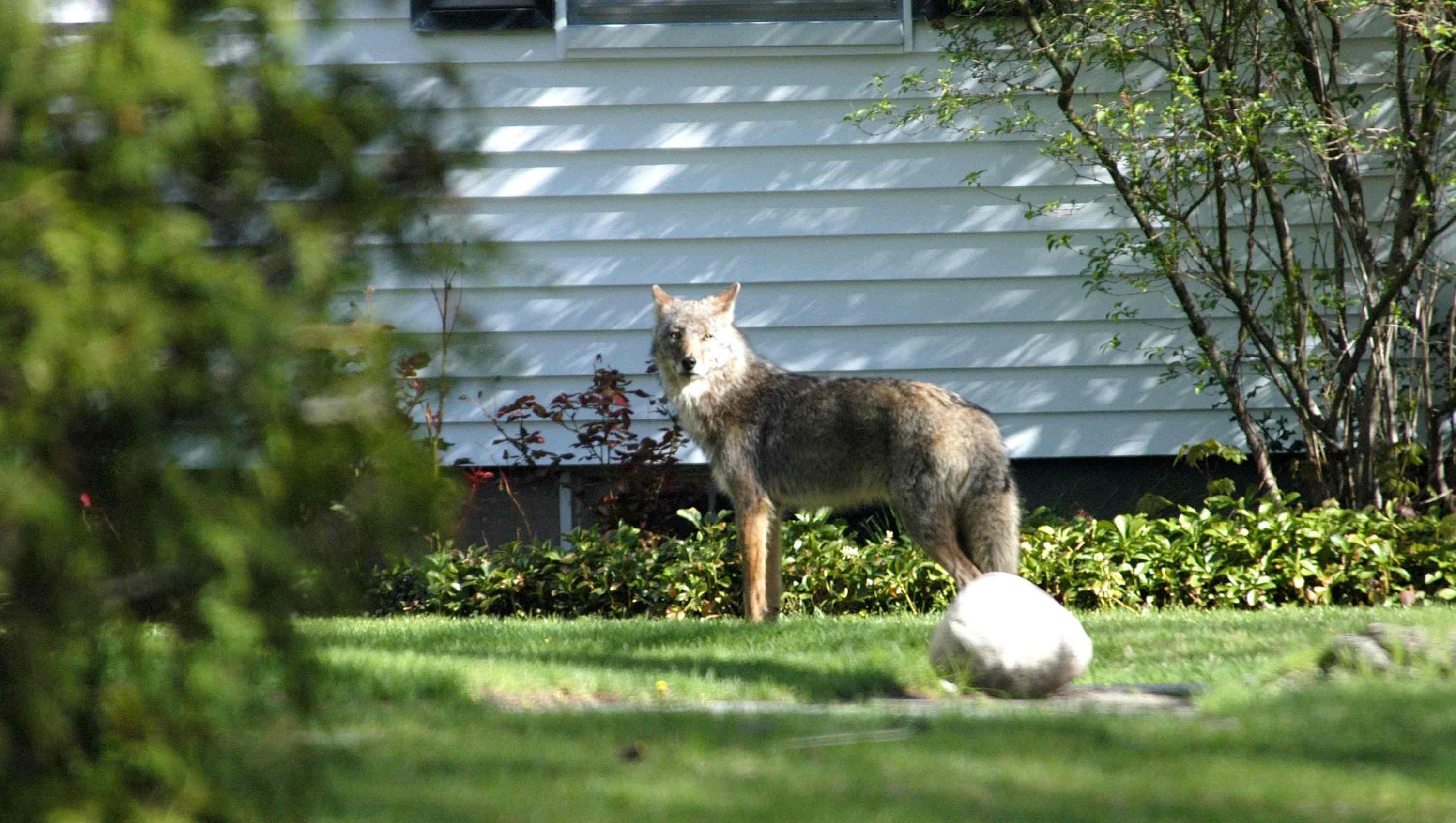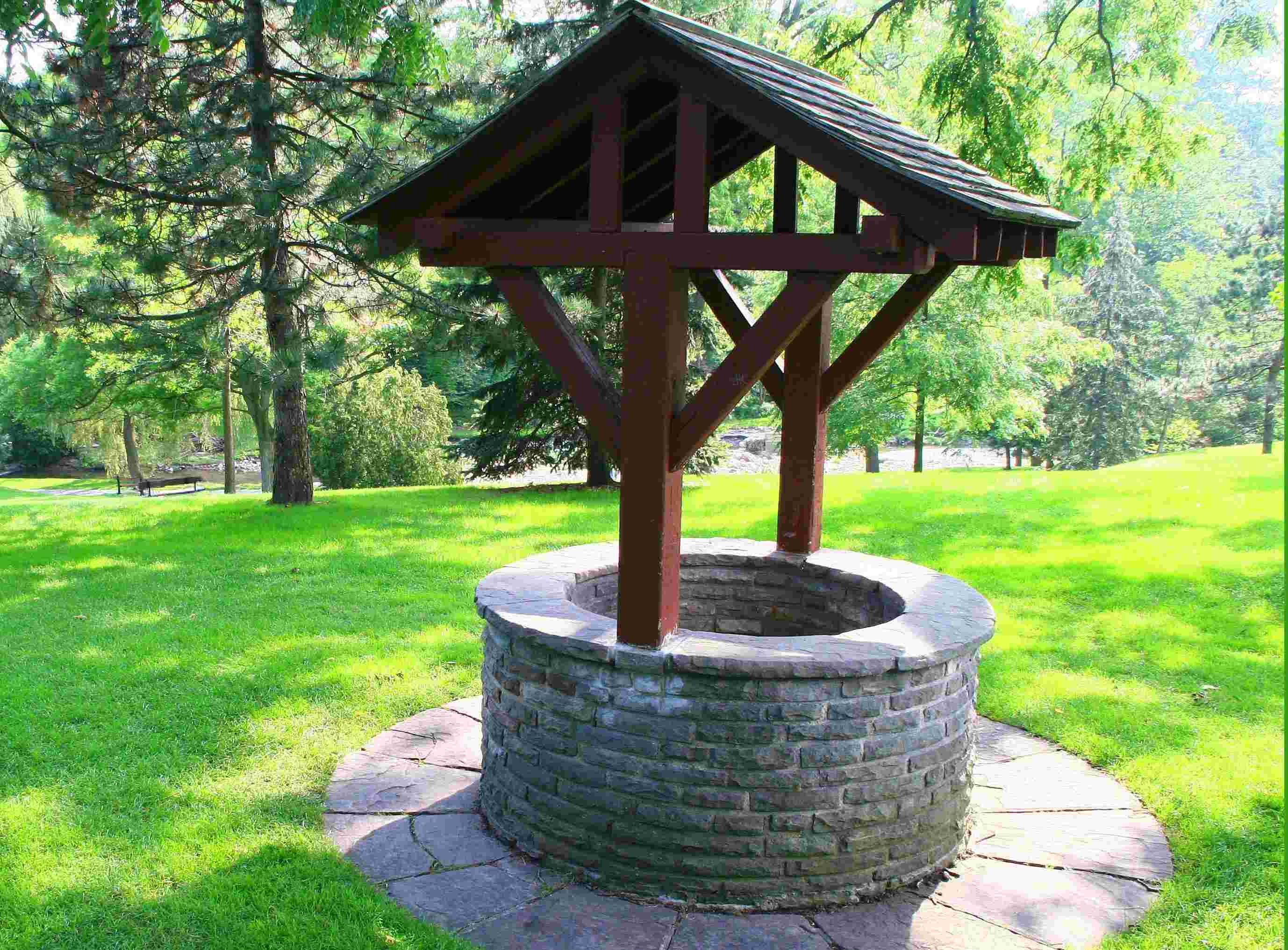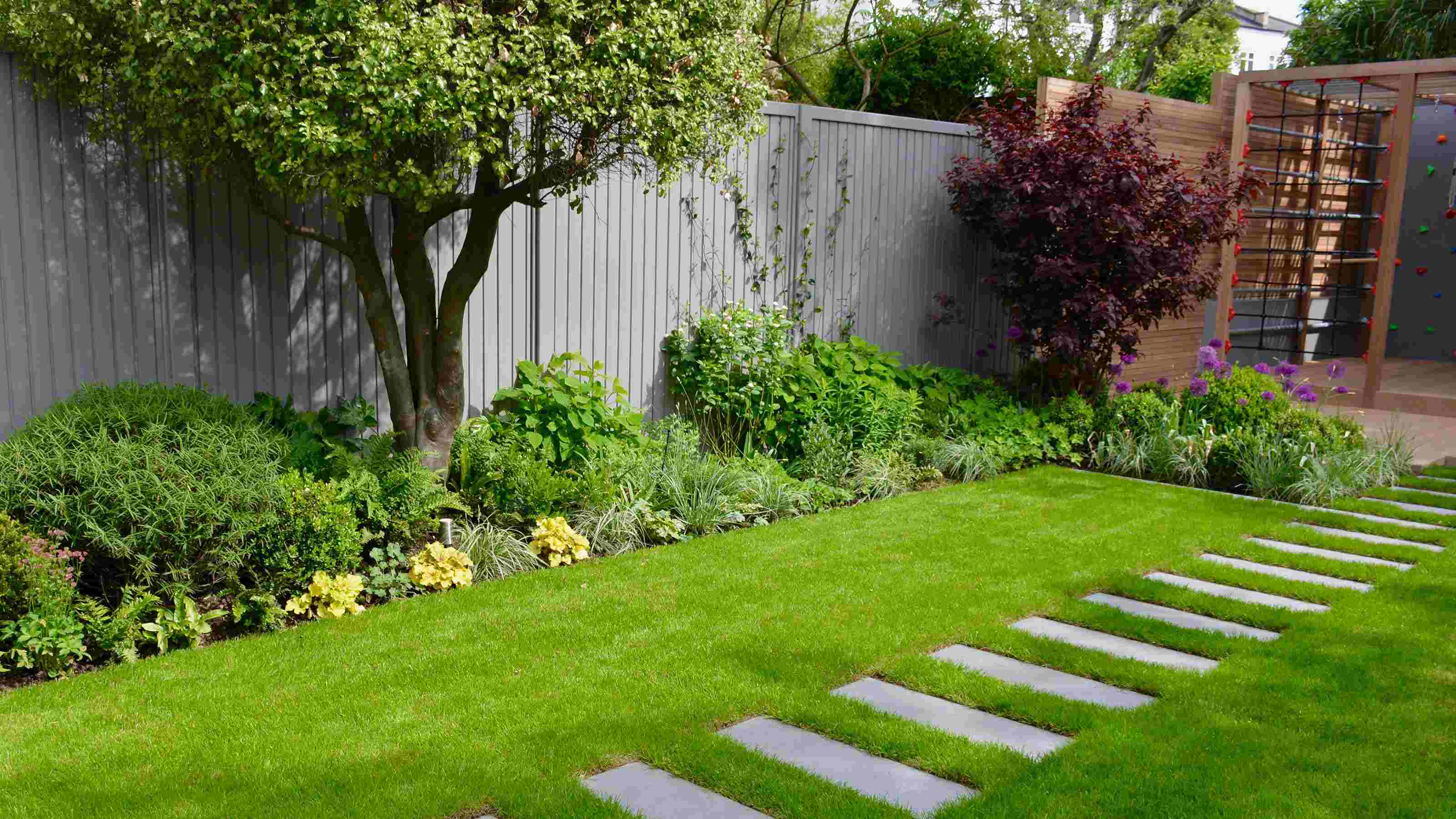Home>Garden Design>How To Improve Your Backyard
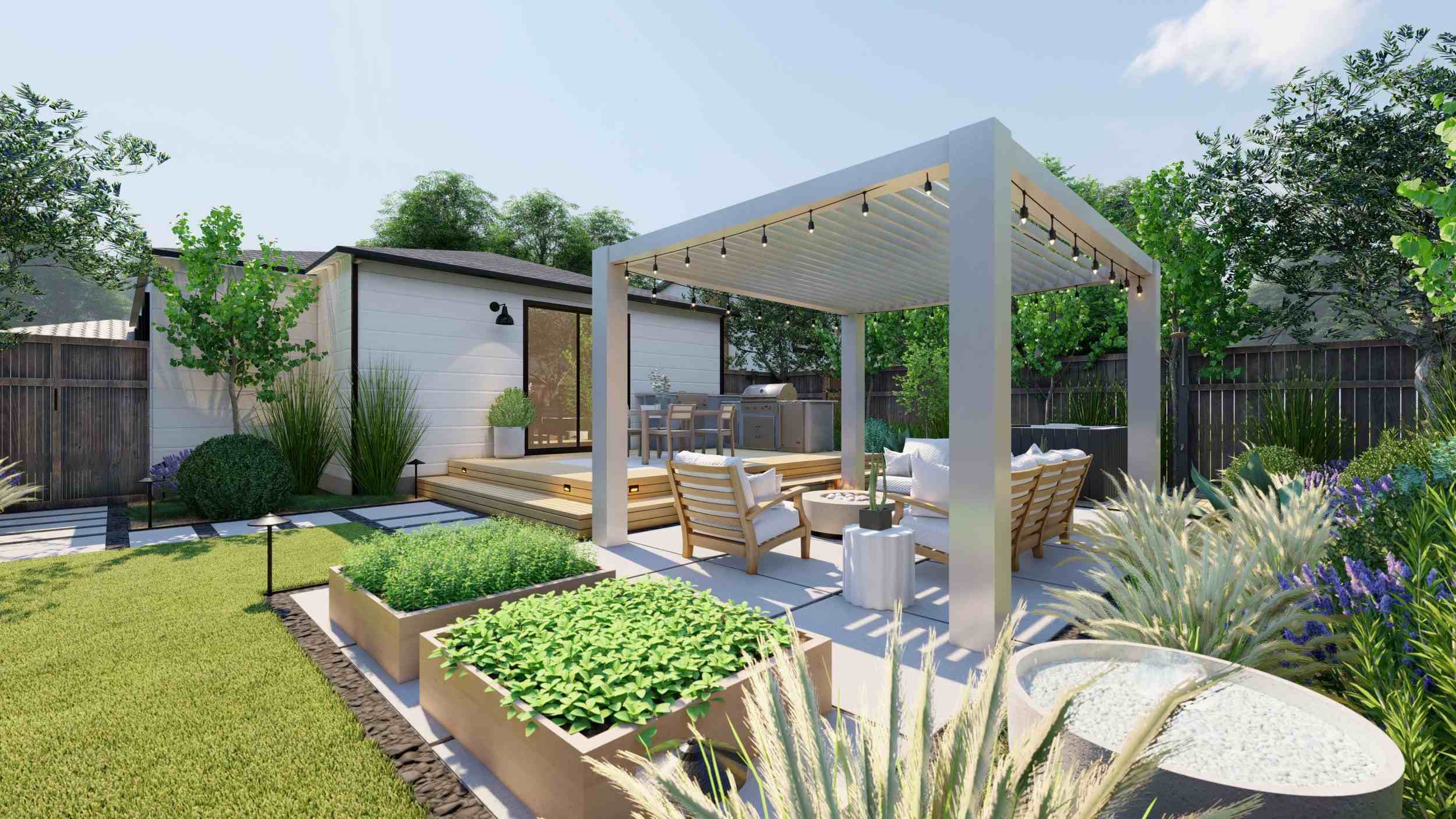

Garden Design
How To Improve Your Backyard
Modified: January 22, 2024
Learn how to improve your backyard with effective landscape design techniques. Enhance the beauty and functionality of your outdoor space with our helpful tips and ideas.
(Many of the links in this article redirect to a specific reviewed product. Your purchase of these products through affiliate links helps to generate commission for Chicagolandgardening.com, at no extra cost. Learn more)
Table of Contents
Introduction
Welcome to the world of landscape design, where nature meets creativity and transforms an ordinary backyard into a stunning oasis. Whether you have a small garden or a vast outdoor space, there are endless possibilities to improve and enhance your backyard. With the right planning, design, and execution, you can create a captivating and functional outdoor area that reflects your personal style.
Landscape design is not just about aesthetics; it is about maximizing the potential of your backyard and creating a space that you and your loved ones can enjoy year-round. From lush greenery to water features and cozy seating areas, there are numerous elements that can elevate the beauty and functionality of your outdoor space.
In this article, we will explore various ways to improve your backyard and transform it into a haven that reflects your unique personality and lifestyle. We will discuss different aspects of landscape design, from assessing your backyard to incorporating key elements such as focal points, seating areas, and water features. Additionally, we will provide tips on maintaining your backyard to ensure its longevity and beauty for years to come.
So, whether you are starting with a blank canvas or looking to revamp your existing backyard, this guide will provide you with the inspiration and knowledge to create a stunning outdoor retreat. Let’s dive in and discover the endless possibilities that await in the world of landscape design.
Assessing Your Backyard
Before you begin any landscaping project, it’s essential to assess your backyard and determine its current state and potential. Take a step back and observe your outdoor space with a critical eye. Consider aspects like size, shape, existing features, and any problem areas that need attention.
Start by evaluating the layout of your backyard. Take measurements and note any existing structures such as patios, decks, or walkways. Consider how these elements can be incorporated into your overall design or if they need refurbishment or modification.
Next, assess the natural features of your backyard. Take note of the soil quality, drainage patterns, and the amount of sunlight your space receives throughout the day. These factors will play a crucial role in deciding what types of plants or design elements will thrive in your backyard.
Consider your personal preferences and lifestyle when assessing your backyard. Do you desire a space for entertaining guests, a play area for children, or a tranquil retreat for relaxation? Understanding how you intend to use your backyard will guide your design choices and help create a functional and enjoyable outdoor space.
Identify any problem areas that may need attention. It could be an uneven terrain, lack of privacy, or poor drainage. These challenges can be turned into opportunities by incorporating clever design solutions that address these issues while enhancing the overall aesthetics of your backyard.
Lastly, consider your budget and time constraints. Determine how much you are willing to invest in your backyard project and the level of maintenance that you are comfortable with. This will help you prioritize your ideas and make informed decisions about the materials and features that will best suit your needs.
By carefully assessing your backyard, you can lay a solid foundation for your landscape design project. Understanding the existing conditions, personal preferences, and limitations will help you create a plan that maximizes the potential of your outdoor space.
Clearing and Cleaning
Once you have assessed your backyard, the next step in improving your landscape is to clear and clean the area. This is an important step as it sets the stage for the transformation of your outdoor space.
Begin by removing any debris, such as fallen branches, leaves, or rocks. Clearing out these materials will not only improve the appearance of your backyard but also create a safer environment for future landscaping activities.
Next, assess the condition of your existing plants and vegetation. Remove any dead or diseased plants and trim overgrown branches. This will promote healthier growth and give your backyard a neater and more polished look.
Take this opportunity to evaluate your lawn as well. If you have patches of bare soil or an uneven surface, consider reseeding or laying new turf. This will help create a lush and vibrant lawn that serves as a beautiful backdrop for your landscape design.
Don’t forget about your hardscape elements, such as pathways, driveways, and patios. Sweep away dirt, weeds, and debris, and wash these surfaces to restore their original luster. This will not only enhance the overall cleanliness of your backyard but also improve the longevity and durability of these structures.
During the cleaning process, pay attention to any areas in your backyard that may require repairs or maintenance. This could include fixing broken fences, repairing irrigation systems, or addressing any drainage issues. Taking care of these tasks early on will prevent further damage and ensure that your landscape design project progresses smoothly.
Lastly, consider the cleanliness and organization of your outdoor storage areas. Clear out and declutter sheds, storage units, or any other spaces where you keep your gardening tools and equipment. Having a well-organized storage area will make it easier for you to maintain your backyard and access the necessary tools when needed.
Clearing and cleaning your backyard is a crucial step in the improvement process. By removing debris, trimming plants, and addressing any maintenance issues, you create a clean and blank canvas on which to design your dream outdoor space.
Creating a Focal Point
A focal point is a central element that draws attention and creates visual interest in your backyard. It serves as a focal point, anchoring the design and adding a sense of purpose to the space. Creating a focal point is an important aspect of landscape design as it captures the viewer’s attention and sets the tone for the entire area.
There are numerous ways to create a focal point in your backyard. One popular option is to incorporate a stunning piece of outdoor artwork or sculpture. This can be a large and eye-catching sculpture, a beautiful fountain, or even a unique and artistic arrangement of rocks or stones. Choose a focal point that resonates with your personal style and complements the overall theme of your backyard design.
If you prefer a more natural and organic focal point, consider creating a focal point using plants and flowers. A well-placed tree, a colorful flower bed, or a beautifully manicured shrub can serve as a visual centerpiece for your outdoor space. Choose plants that have interesting shapes, vibrant colors, or unique textures to add depth and intrigue to your backyard.
Water features such as a pond, waterfall, or even a small decorative fountain can also make an excellent focal point in your backyard. The tranquil sound of running water and the reflective qualities of water elements can create a calming and serene atmosphere, making it the perfect centerpiece for relaxation and contemplation.
Another way to create a focal point is by incorporating a well-designed seating area. This could be a comfortable outdoor sofa set, a cozy fire pit with seating around it, or a beautifully crafted pergola with a dining table and chairs. By creating a designated space for gathering and relaxation, you instantly draw attention and create a focal point that invites people to enjoy your backyard.
When creating a focal point, consider its placement within your backyard. It should be strategically positioned to create a visual impact and draw the eye towards it. Additionally, ensure that the focal point complements the overall design of your backyard and does not overwhelm or clash with other elements.
Creating a focal point in your backyard adds a sense of purpose and visual interest to the space. Whether it’s through artwork, plants, water features, or seating areas, a focal point serves as the centerpiece that ties the entire landscape design together and captures the attention of anyone who enters your outdoor oasis.
Enhancing Privacy
Privacy is an important aspect of any backyard design, allowing you to fully enjoy your outdoor space without feeling exposed to neighbors or passersby. Enhancing privacy in your backyard not only creates a sense of seclusion but also adds a layer of tranquility and intimacy. There are several effective ways to enhance privacy in your outdoor oasis.
One of the most popular and effective methods to enhance privacy is by installing a fence or a privacy screen. Fences come in various materials and styles, allowing you to choose the one that best suits your aesthetic preferences. Whether it’s a wooden fence, a vinyl fence, or a metal fence, installing a boundary around your backyard creates a secure and private space. Alternatively, privacy screens made of bamboo or fabric can be strategically placed to block the view from certain angles while adding a touch of elegance to your backyard.
Planting trees, shrubs, and hedges is another natural and effective way to enhance privacy. Choose plants with dense foliage that will act as a natural barrier and create a green and lush backdrop for your backyard. Consider evergreen varieties for year-round privacy or flowering plants for an added pop of color. Properly spaced and strategically planted greenery can create a sense of enclosure and seclusion while also adding beauty and serenity to your outdoor space.
If you have an existing fence or wall, you can enhance privacy by adding climbing plants or vines. These plants will grow and intertwine with the structure, creating a living wall that not only blocks the view but also adds a touch of natural beauty. Choose plants such as ivy or clematis that have strong climbing tendencies and lush foliage.
For balconies or patios, retractable screens or outdoor curtains can provide instant privacy when needed. These screens or curtains can be easily opened or closed, allowing you to control the level of privacy without sacrificing the aesthetic appeal of your outdoor seating area.
Adding water features, such as a fountain or a small waterfall, can also enhance privacy. The sound of flowing water helps create a soothing environment while providing a masking effect for any unwanted noise. Additionally, water features add a sense of serenity and act as a focal point, drawing attention away from neighboring areas.
When considering privacy in your backyard design, it’s important to strike a balance between seclusion and maintaining a connection to nature. While enhancing privacy is essential, it’s also important to ensure that your backyard remains inviting and open. By implementing the right combination of fencing, greenery, and strategically placed elements, you can create a private sanctuary that allows you to enjoy the beauty of your outdoor space without feeling exposed.
Adding Lighting
Proper lighting is a key element in transforming your backyard into a mesmerizing space that can be enjoyed both day and night. Adding outdoor lighting not only enhances the aesthetics of your landscape design but also increases safety and extends the usability of your outdoor space long after the sun goes down. Here are several ways to incorporate lighting into your backyard.
Start by considering the overall ambiance you want to create. Soft and warm lighting can create a cozy and intimate atmosphere, while brighter lights can promote a lively and vibrant feel. Utilize a variety of lighting techniques, such as uplighting, downlighting, and accent lighting, to highlight specific areas and create depth in your backyard.
One popular method is to use string lights or fairy lights to create a magical and enchanting atmosphere. These lights can be hung from trees, wrapped around pergolas or fences, or draped along outdoor structures. String lights are a versatile and affordable option that instantly adds a touch of charm and elegance to your backyard.
Another effective way to add lighting is to install pathway or walkway lights. These lights not only provide safety and guidance but also create a beautiful and inviting ambiance. Choose lights that complement the style of your backyard, such as sleek and modern fixtures or rustic lanterns.
Landscape lighting is also a great way to enhance the beauty of your outdoor space at night. Use uplighting to highlight trees, shrubs, or architectural elements, creating dramatic and visually striking effects. Additionally, consider using underwater lights to accentuate the beauty of water features, such as ponds or fountains.
If you have a seating area, incorporating outdoor lamps or lanterns can add a cozy and intimate ambiance. These portable lighting options provide flexibility and can be moved around to suit your needs. Choose lamps that are weather-resistant and have a style that complements your overall outdoor design.
Smart lighting systems allow you to control your outdoor lights conveniently. With apps and timers, you can automate your lighting to turn on and off at specific times or create different lighting scenes for various occasions. Smart lighting not only adds convenience but also helps conserve energy by ensuring that lights are only on when needed.
Consider using solar-powered lights to reduce energy consumption and minimize the impact on the environment. Solar lights are easy to install and require no wiring. They charge during the day and automatically illuminate your backyard at night. Using solar lights is a sustainable and cost-effective option for adding lighting to your outdoor space.
Adding lighting to your backyard creates a captivating and inviting atmosphere, transforming it into a beautiful and functional space that can be enjoyed throughout the day and into the night. By utilizing different lighting techniques and choosing fixtures that complement your landscape design, you can create an enchanting outdoor environment that will leave a lasting impression on anyone who visits.
Incorporating Seating Areas
A well-designed seating area is a key component of any backyard. It provides a place for relaxation, socializing, and enjoying the beauty of your outdoor space. Incorporating seating areas into your backyard design not only enhances functionality but also adds a touch of comfort and style. Here are some ideas for incorporating seating areas into your landscape design.
Start by considering the size and layout of your backyard. Determine how much space you have available for seating and how it will fit into the overall design. For smaller yards, consider utilizing vertical space by incorporating hanging chairs or wall-mounted benches. For larger yards, you have more flexibility to create multiple seating areas, each with its own purpose and ambiance.
Create a focal point for your seating area, such as a fire pit, an outdoor fireplace, or a water feature. This will not only enhance the visual appeal but also provide a gathering spot and a sense of coziness. Arrange the seating around the focal point to encourage conversation and create a welcoming atmosphere.
Think about the materials and style of the furniture that will best complement your backyard design. Choose materials that are durable, weather-resistant, and easy to maintain. Whether it’s wicker, metal, wood, or a combination, select furniture that reflects your personal style and blends seamlessly with the overall aesthetic of your outdoor space.
Consider incorporating various seating options to accommodate different needs and preferences. Mix and match chairs, benches, and loungers to create a dynamic and versatile seating area. Add cushions and throws in different patterns and colors to add comfort and style.
When positioning the seating area, take into account factors such as sunlight, shade, and privacy. Ensure that the seating area is well-lit for nighttime enjoyment and positioned in a way that maximizes comfort and creates a sense of privacy.
Include a dining area in your backyard design if you enjoy outdoor dining and entertaining. This can be as simple as a table and chairs or as elaborate as a built-in barbecue or outdoor kitchen. A dedicated dining area provides a space for enjoying meals with family and friends while making the most of your outdoor space.
Don’t forget about the importance of shade in your seating area. Incorporate umbrellas, pergolas, or trellises with climbing plants to provide shade and protection from the sun. This will make your seating area more comfortable and usable, especially during hot summer months.
Lastly, add personal touches and accessories to your seating area. Decorate with outdoor rugs, cushions, and throw pillows in colors that complement your backyard design. Add side tables for convenience and to hold drinks or snacks. Incorporate plants, lanterns, or string lights to create a cozy and inviting atmosphere.
Incorporating seating areas into your backyard design allows you to fully enjoy your outdoor space and create a comfortable and inviting environment. By considering the size, style, and purpose of your seating area, you can create a functional and beautiful space that will become a favorite spot for relaxation and entertainment.
Building a Fire Pit
A fire pit is a wonderful addition to any backyard, providing warmth, ambiance, and a focal point for gatherings and relaxation. Building a fire pit allows you to create a cozy and inviting space where you can gather with family and friends to enjoy the beauty of the outdoors. Here are some steps to guide you in building your own fire pit.
First, choose the location for your fire pit. Select an area that is safe and away from any overhanging trees, structures, or flammable materials. Consider factors such as wind direction and proximity to seating areas or entertaining spaces.
Decide on the size and shape of your fire pit. It can be a simple circular or rectangular design, or you can get creative and opt for a custom shape that suits your backyard’s aesthetic. Measure and mark the desired dimensions of the fire pit on the ground using stakes and string.
Start digging the pit. Dig a shallow hole about 6 to 8 inches deep within the marked area. Make sure the pit is level and the walls are straight. Remove any roots, rocks, or debris to ensure a smooth surface.
Once the hole is dug, line the bottom of the pit with a layer of gravel. This will provide drainage and help protect your fire pit from heat damage. Spread the gravel evenly across the entire base of the pit.
Next, stack bricks or stones around the edges of the pit to build the walls of the fire pit. Make sure the materials you choose are fire-resistant and can withstand high temperatures. Arrange the bricks or stones tightly together, using a level to ensure they are even and straight.
Continue stacking the bricks or stones until the walls reach the desired height. Aim for a height of about 12 to 18 inches, which provides enough containment for the fire while allowing for comfortable seating around the pit.
Once the walls are in place, fill any gaps between the stones with heat-resistant mortar to secure the structure and create an even surface. This will also help prevent shifting or collapsing of the walls over time.
Allow the mortar to dry completely before using the fire pit. Follow the manufacturer’s instructions for the specific drying time of the mortar you are using. This step is crucial for the stability and longevity of your fire pit.
After the mortar has dried, you can start using your fire pit. Add a layer of sand or gravel to the bottom of the pit to provide a protective barrier between the flames and the bottom of the pit. This will extend the life of your fire pit and make it easier to clean.
To enjoy a safe and enjoyable fire pit experience, be sure to follow fire safety guidelines. Keep a fire extinguisher or a bucket of water nearby, never leave the fire unattended, and always fully extinguish the fire before leaving the area.
Building a fire pit is a rewarding and enjoyable project that adds both functionality and aesthetics to your backyard. Whether you’re roasting marshmallows, sharing stories, or simply enjoying the warmth of the fire, a well-built fire pit creates a cozy and inviting atmosphere for memorable moments with loved ones.
Planting Vegetation and Flowers
Planting vegetation and flowers is a crucial step in enhancing the beauty and natural appeal of your backyard. Greenery and blooms bring life, color, and fragrance to your outdoor space, creating a vibrant and inviting atmosphere. Whether you have a large garden or a small balcony, here are some tips for planting vegetation and flowers to transform your backyard into a stunning oasis.
Start by considering the climate and soil conditions in your area. Choose plants and flowers that are suitable for your specific region. Consider factors such as sunlight, temperature, and rainfall to ensure the plants will thrive in their environment. If you’re unsure about the best options for your area, consult with local nurseries or gardening experts for advice.
Plan your planting layout to create visual interest and balance. Consider the height, colors, and textures of the plants to create a harmonious and cohesive design. Place taller plants at the back or center of flower beds or use them as a backdrop for other plants. Mix a variety of flower sizes, shapes, and colors to create a dynamic and eye-catching display.
When planting, prepare the soil to provide a healthy foundation for your plants. Remove any weeds or debris and break up the soil to allow for proper root development. Consider adding organic matter or compost to improve the soil’s fertility and drainage.
Choose a mixture of annuals and perennials to ensure a continuous bloom throughout the seasons. Annual flowers offer a burst of vibrant colors and need to be replanted each year, while perennials come back year after year, providing a more consistent display of foliage and blooms.
Consider planting a mixture of flowers with different blooming periods to create a visually appealing and ever-changing landscape. This ensures that there will always be something in bloom throughout the year, bringing beauty to your backyard in every season.
When planting, pay attention to the spacing recommendations for each plant. Giving the plants enough space to grow ensures proper air circulation and reduces the competition for nutrients. As the plants grow, make sure to prune and trim them regularly to maintain their shape and promote healthy growth.
Incorporate plants that attract pollinators such as bees and butterflies. Choose flowers with high nectar content and bright colors to attract these beneficial insects. Not only will this create a lively and delightful atmosphere, but it will also contribute to the ecological balance of your backyard.
Consider incorporating edible plants into your backyard landscape. Plant herbs, vegetables, or fruit-bearing trees and shrubs to create a functional and bountiful garden. Not only will you enjoy the beauty of these plants, but you can also harvest homegrown produce for your culinary endeavors.
Lastly, remember to provide proper care and maintenance for your plants and flowers. This includes regular watering, fertilizing, and pruning as needed. Be mindful of the specific needs of each plant and adjust your care routine accordingly.
Planting vegetation and flowers is a rewarding and creative process that adds charm, color, and life to your backyard. By selecting the right plants, planning a thoughtful layout, and providing proper care, you can create a stunning garden that will bring joy and beauty to your outdoor space for years to come.
Installing Water Features
Water features bring a sense of serenity, movement, and tranquility to any backyard. The sound of flowing water and the captivating visual display of water in motion create a soothing and peaceful atmosphere. Installing a water feature in your outdoor space can elevate the overall aesthetic and ambiance while providing a unique focal point. Here are some ideas for incorporating water features into your backyard.
One popular option is a traditional fountain. Fountains come in various styles, from classic tiered designs to modern sculptures, allowing you to find one that suits your personal taste and complements your backyard’s aesthetic. The sound of flowing water and the visually pleasing display of the fountain will bring a sense of elegance and tranquility to your outdoor space.
Ponds or water gardens are another enchanting water feature that can transform your backyard. These can be as small or as large as your space allows and can be home to aquatic plants and fish. The sight of colorful fish swimming in a serene pond or the beauty of blooming water lilies create a captivating and serene environment.
A waterfall adds a touch of drama and natural beauty to your backyard. Whether it’s a small cascading waterfall or a grand waterfall flowing into a pond, the sight and sound of water cascading down rocks create a mesmerizing and peaceful atmosphere. Consider incorporating rocks and stones of different sizes and textures to create a natural-looking waterfall that seamlessly blends with the surrounding landscape.
For a more contemporary and minimalist water feature, consider an architectural water wall or a water blade. These sleek and streamlined designs provide a visually stunning display of water streaming down a vertical surface. They add a modern and sophisticated touch to any outdoor space.
Don’t forget about the versatility of a simple birdbath. Birdbaths not only provide a water source for birds but also add a charming and decorative element to your backyard. Choose a birdbath that complements your overall design aesthetic and place it in a visible and accessible area where you can enjoy watching the birds come to visit.
When installing a water feature, consider the practical aspects as well. Ensure that you have proper access to electricity and water sources, and factor in the maintenance required to keep the water feature clean and functioning properly. Consult with an expert or a professional landscaper to ensure that all necessary plumbing or electrical work is done safely and efficiently.
Lighting can play a crucial role in highlighting your water feature. Install underwater lights or spotlights to accentuate the beauty of the water feature at night. This will create a captivating and magical display and allow you to enjoy your water feature even after the sun goes down.
Adding a water feature to your backyard brings a sense of tranquility and natural beauty. The sound and sight of flowing water create a calming and relaxing environment, inviting you to unwind and connect with nature. Whether it’s a fountain, pond, waterfall, or birdbath, the addition of a water feature will elevate the overall aesthetic and provide a captivating centerpiece for your outdoor space.
Maintaining Your Backyard
Once you have transformed your backyard into a beautiful and functional space, it’s important to establish a regular maintenance routine to ensure its longevity and beauty. Proper maintenance will help preserve the health of your plants, the functionality of your outdoor features, and the overall appeal of your outdoor space. Here are some essential tips for maintaining your backyard.
Regularly water your plants and monitor their moisture levels. Different plants have different watering needs, so it’s important to understand the specific requirements of each plant in your backyard. Water deeply and thoroughly, especially during dry periods, and adjust the frequency of watering based on weather conditions.
Remove weeds regularly to prevent them from competing with your plants for nutrients and space. Pull weeds by hand or use appropriate tools to remove them from the roots. Consider applying a layer of mulch around your plants to suppress weed growth and conserve moisture in the soil.
Trim and prune your plants as needed to maintain their shape and promote healthy growth. Remove dead or diseased branches, and trim overgrown areas to allow for better air circulation and sunlight penetration. Pruning also helps remove any potential hazards or obstructions in your backyard.
Fertilize your plants to provide them with necessary nutrients for optimal growth. Use organic or slow-release fertilizers to replenish the soil’s nutrients gradually. Follow recommended application rates and schedules to prevent over-fertilization, which can harm your plants and the environment.
Regularly clean and maintain your outdoor furniture and surfaces. Clean patio furniture, cushions, and umbrellas to remove dirt and prevent mildew. Sweep and wash pathways, decks, and patios to remove debris and prevent slippery surfaces. Take care of any repairs or maintenance tasks promptly to prolong the lifespan of your outdoor structures.
Keep an eye out for pests and take appropriate measures to manage them. Regularly inspect your plants for signs of pests or diseases, such as discolored leaves or holes in the foliage. Use organic or targeted methods to control pests, such as handpicking or using insecticidal soaps.
Regularly check and maintain your irrigation system to ensure proper watering of your plants. Repair any leaks or broken sprinkler heads, and adjust the timing and frequency of watering as needed. Regularly clean and unclog gutters and downspouts to prevent water damage and ensure efficient drainage.
Practicing good lawn care is essential for maintaining a healthy and lush lawn. Mow your lawn regularly at the appropriate height to promote healthy growth and discourage weeds. Aerate the soil periodically to improve air and water circulation. Apply appropriate fertilizers and address any issues, such as bare spots or pest infestations, in a timely manner.
Protect your outdoor structures and features during harsh weather conditions. Secure or store outdoor furniture and accessories during storms or extreme temperatures. Cover delicate plants or move them indoors during frost or freeze events. Regularly inspect and maintain fences, gates, and other structures to ensure their stability and functionality.
Regularly inspect your water features, such as fountains or ponds, and clean them to prevent stagnation and buildup of debris. Remove fallen leaves and other debris to maintain the water’s cleanliness and prevent clogging of pumps or filters. Ensure that the water feature’s electrical components are in good condition and follow safety precautions while performing maintenance.
By establishing a regular maintenance routine, you can ensure that your backyard remains beautiful, functional, and enjoyable year-round. Consistent care and attention will reward you with a flourishing and inviting outdoor space that you can fully appreciate and enjoy.
Conclusion
Congratulations on embarking on the journey of improving your backyard! By following the steps and tips outlined in this article, you can transform your outdoor space into a stunning and functional oasis that reflects your personal style and enhances your lifestyle. Whether it’s clearing and cleaning, creating a focal point, enhancing privacy, adding lighting, incorporating seating areas, building a fire pit, planting vegetation and flowers, installing water features, or maintaining your backyard, each element plays a vital role in creating a harmonious and inviting outdoor environment.
Remember to carefully assess your backyard and consider your personal preferences and needs before starting any landscaping projects. From there, let your creativity and knowledge of landscape design guide you in selecting the right elements and incorporating them into your backyard. Focus on balance, aesthetics, and functionality to create a space that is both visually stunning and practical for you and your loved ones to enjoy.
Maintaining and caring for your backyard is just as important as the initial improvements. Regular watering, pruning, and cleaning will ensure that your plants and features thrive while preserving the beauty of your outdoor space for years to come. Embrace the process of nurturing and tending to your backyard, and it will reward you with a vibrant and inviting oasis that brings joy and relaxation to your everyday life.
Now that you have the knowledge and inspiration, it’s time to put your plans into action. Take the first step towards transforming your backyard and enjoy the fulfilling and gratifying experience of creating an outdoor retreat that brings you closer to nature and provides a haven for relaxation, entertainment, and cherished memories. So go ahead, roll up your sleeves, and make your dream backyard a reality!
